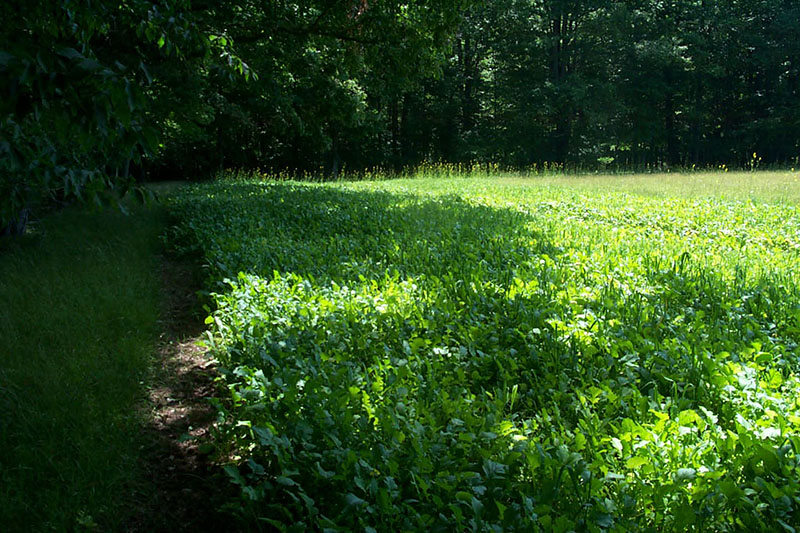Here in the ridge and valley region of PA, deer bed high on the ridges in mountain laurel. Here they are undisturbed, have overhead canopy and thick cover and, most importantly, an advantage over predators due to wind currents just off the crest of a ridge.
In New York, the rolling terrain is a little different. There is food in every direction and the deer bed in any thick and undisturbed cover they can find. Often I find deer bedded on high spots in swampy lowland.
Hinge cutting and making beds within the cover by digging level spots where deer are likely to lay is all I do. Jim Ward is teaching me how he does it in this video, with a log for a backing and leveling up a spot in front of it. He also taught me that I need to cut a lot more trees and make more of a mess to get the area thickened up.
Multiple beds are made near food where we want the does to hang out. Then, more isolated beds in prmium hide locations are made as far from the doe groups as possible. On this property, we are likely to not even attract old bucks because of the slope position and the noise of truck traffic on the road. However, bucks definitely cruise up and down the creek, crossing doe trails that are used at night to check for receptive does. By making the impenetrable “fence” from the spruce plantation, we can capture bucks that are perhaps walking by and guide them back toward the food, does, water and newly – created thickets. Then, an approach from downwind and a strategic stand setup on the downwind side of the bedding areas completes the setup.
Keep in mind, its great to make bedding areas and food plots, but what we want to eventually do is kill a deer. What we can attempt to do is get the deer to travel where we want them to so we can set up and get in position for a shot.
So, now we have linear travel routes using blocking cover, food along the travel routes, food plots spread out along side the travel. We have soy beans and corn in a field rented from the neighboring farmer for a fall destination plot that will keep deer from wandering onto the massacre ground of the opposite neighbor.
In late summer, we will go up and see what the deer are doing with their new cover and food, and set up some stands. then, come Holloween, its time to get out and hunt it. Good scent control and minimally invasive hunts will hopefully keep the deer comfortable and moving during daylight.

